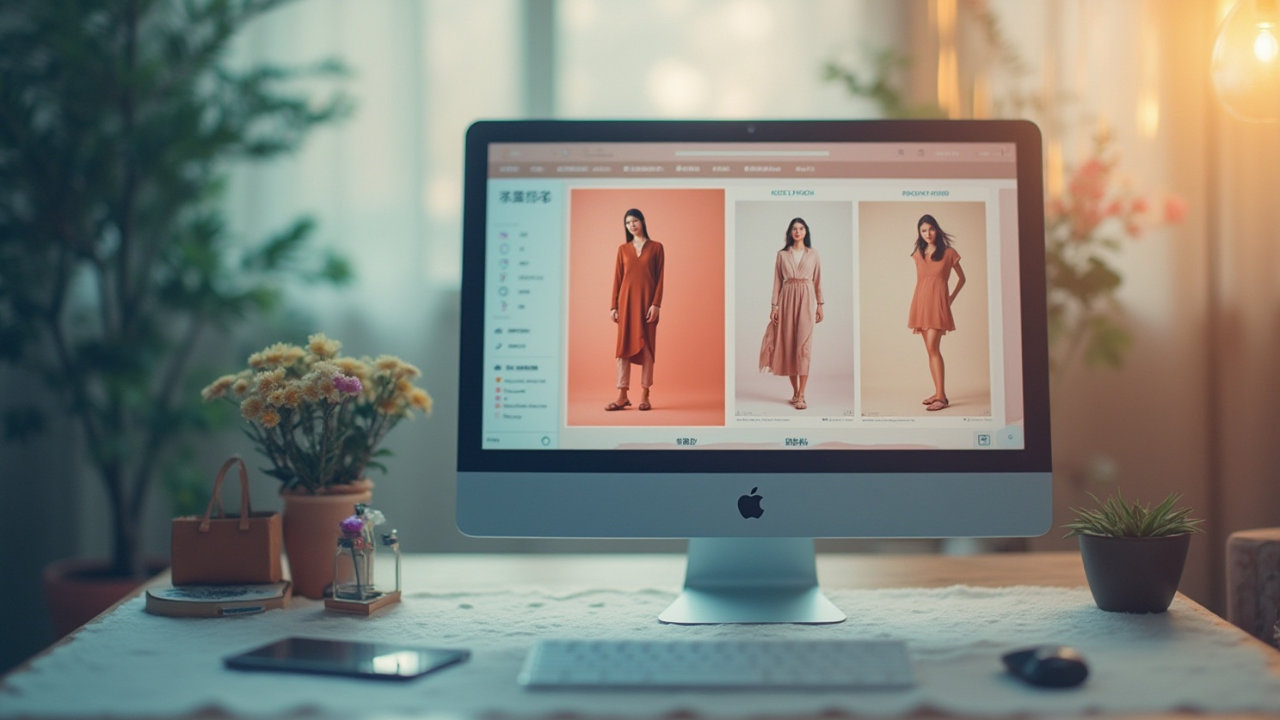
Influencer Marketing Strategy 2025: How to Win Trust and Drive Results
If you’ve ever bought something after seeing your favorite content creator recommend it, you’re not alone. Influencer marketing has become one of the most powerful ways brands connect with consumers—and it’s not slowing down in 2025.
For businesses in Singapore and beyond, influencer marketing isn’t just a “nice to have” anymore. It’s a strategic channel that builds brand credibility, drives conversions, and complements performance media. Whether you're running a brand or managing campaigns for an enterprise, understanding how to use influencers effectively can make or break your strategy.
In this guide, we’ll walk you through the strategies of influencer marketing in 2025—from the 3Rs framework to knowing when to use a soft sell versus a hard sell. .
Why Influencer Marketing Still Matters in 2025
Influencer marketing has evolved from a novelty into a mainstream channel. According to Trackr in 2024, 70% of consumers are likely to buy products from the influencers they trust. And with the rise of platforms like TikTok, Instagram Reels, and even B2B content on LinkedIn, influencer content is more diverse and dynamic than ever.
But why does it work?
Simple: People trust people more than they trust ads. When someone they follow talks about a product or service, it's perceived as a recommendation, not a promotion.
The 3Rs of Influencer Marketing: Your Strategy Framework
To run a successful influencer campaign, remember the 3Rs: Relevance, Reach, and Resonance. This simple framework helps ensure you're choosing the right influencers and setting the right expectations.
1. Relevance
This is about alignment. Does the influencer's content, audience, and values align with your brand? A beauty influencer promoting accounting software makes little sense. But a productivity-focused creator on TikTok might be a great fit.
Ask yourself: Would this influencer genuinely use our product?
2. Reach
Reach refers to how many people might see the content. But more followers doesn’t always mean better results. A smaller creator with a highly engaged community may outperform a mega-influencer with passive followers.
Tip: Don’t chase vanity metrics—track engagement rates, not just follower counts.
3. Resonance
Resonance is how well the influencer can move their audience to act. Do their followers trust them? Are they known for authentic content? This is where true ROI lives.
Example: A fitness influencer who shows their real daily workout and struggles may resonate more than a polished model with no real connection to their audience.

💡 Pro Tip: If You Must Prioritize One “R” — Choose Resonance
Here’s why Resonance matters most:
1. Engagement > Exposure
An influencer with millions of followers (Reach) won’t help your brand if no one interacts with their content. But an influencer with 10K highly engaged followers (Resonance) can drive real conversations, clicks, and conversions.
📉 A high reach with low resonance often results in wasted budget.
2. Trust Drives Action
People take action (click, buy, share) when they trust the person recommending a product. Resonant influencers have a strong bond with their audience, making their recommendations far more persuasive.
👥 Consumers buy from people they relate to, not just people they see.
3. Authenticity Can't Be Faked
Relevance can be engineered (e.g., matching a fashion brand with a fashion influencer). But Resonance is earned — and it shows up in meaningful comments, loyal community, and heartfelt testimonials.
🔍 Brands that focus on resonance tap into real influence, not surface-level popularity.
4. Better for Long-Term Brand Equity
Even if someone doesn’t buy right away, content that resonates leaves a lasting impression. It plants the seed of trust, making future conversions more likely through retargeting or word-of-mouth.
5. It’s the Strongest Signal of Influence
You’re not just buying a post — you’re borrowing influence. And influence isn’t defined by how many people are watching; it’s defined by how many people are listening, believing, and acting.
In short:
👉 Reach gets your brand seen.
👉 Relevance gets your brand in the right context.
👉 But Resonance gets your brand remembered — and acted upon.
Soft Sell vs Hard Sell in Influencer Marketing
Not all influencer content is created equal. Understanding the difference between soft sell and hard sell content can help you plan more effective campaigns.
🧁 Soft Sell: The Storytelling Strategy
Soft sell content is subtle. It’s focused on storytelling and integrating your brand into the influencer’s everyday life. There are no pushy CTAs or promotional tones.
Examples:
- A mumfluencer casually showing her toddler playing in eco-friendly clothing.
- A LinkedIn creator writing about career burnout and mentioning a wellness app that helped her recover.
- A TikTok creator showing their morning routine with your product on the counter—not even directly talking about it.
Best for:
- Building long-term trust and awareness
- Launching new products
- Establishing emotional connection with your audience
Why it works: Consumers don’t feel like they’re being sold to. They discover your brand in a more natural, lifestyle-oriented context.
💥 Hard Sell: The Conversion Push
Hard sell content is more direct. It includes clear calls to action, special offers, and instructions to “click the link,” “use my code,” or “buy now.”
Examples:
- “Get 20% off with my code KPI20—limited time only!”
- “Here’s why I switched to this skincare brand and why you should too.”
- Product demos, tutorials, and direct links to e-commerce stores.
Best for:
- Flash sales, product launches, or time-sensitive promos
- Measurable ROI-focused campaigns
- Influencer affiliate partnerships
Why it works: It’s great when you need bottom-funnel results and fast conversions.
Which One Should You Use?
The most effective influencer strategies often blend both.
- Top of Funnel: Use soft sell to build brand awareness and create emotional touchpoints.
- Bottom of Funnel: Use hard sell to capture attention, push urgency, and drive clicks.
💡 Pro tip: Long-term partnerships allow you to rotate between both styles. Influencers can introduce your product subtly at first, then follow up with more sales-focused content later.

✅ Top Influencer Marketing Strategies (2025)
These strategies go beyond just finding influencers — they help build long-term brand growth and measurable results:
1. Always-On Influencer Campaigns
Instead of one-off posts, collaborate with influencers on a long-term basis. Think brand ambassadors who talk about your product regularly throughout the year.
✅ Why it works: Builds consistency and credibility over time.
2. Influencer Whitelisting & Paid Ads Amplification
With permission, use an influencer’s handle and content in your own paid ad campaigns on Meta, TikTok, or Google.
✅ Why it works: Their content + your budget = scalable performance.
3. Affiliate-Based Influencer Programs
Reward influencers with a commission for each sale they drive, instead of (or alongside) flat fees.
✅ Why it works: You only pay when results are delivered.
4. Influencer-Guided Product Launches
Partner with influencers before a launch to build hype. Send them exclusive previews or allow them to be the “first to reveal.”
✅ Why it works: Builds FOMO and urgency with authentic storytelling.
5. UGC Campaigns via KOCs or Micro Influencers
Leverage authentic content from real customers (KOCs) or micro influencers for use in paid ads, landing pages, or social proof sections on your website.
✅ Why it works: Real-life content increases relatability and trust.
6. Niche Targeting Using Micro-Communities
Target niche communities (e.g. vegan moms, indie book lovers, Singaporean tech founders) by finding influencers with smaller, but hyper-relevant audiences.
✅ Why it works: Converts better due to deep alignment with values.
7. Live Collaborations & Social Takeovers
Host live sessions (e.g. Instagram Live, TikTok Live, YouTube Live) with influencers or let them “take over” your account for a day.
✅ Why it works: Builds excitement, engagement, and real-time interaction.
8. Influencer-Led Giveaways or Contests
Use influencers to promote a contest or giveaway where followers must engage (follow, tag, share) to win.
✅ Why it works: Drives viral reach and rapid follower growth.
A/B Testing Influencer Strategies: Micro vs Macro, Soft vs Hard Selling
There’s no one-size-fits-all formula in influencer marketing. That’s why A/B testing different influencer combinations can help you discover what truly works for your brand.
Here are four popular influencer marketing setups you can test:
1. Micro KOL + Soft Sell
What it looks like: A micro-influencer (10K–100K followers) creates casual, lifestyle content featuring your product naturally without overt promotion.
Best for: Building trust and authentic word-of-mouth, especially for niche or community-focused products.
Example: A food micro-influencer posting a recipe using your organic honey without directly saying “buy now.”
2. Micro KOL + Hard Sell
What it looks like: The same micro-influencer, but this time using a promo code, “link in bio,” or countdown timer in a more salesy tone.
Best for: Conversion-focused campaigns with clear CTAs like flash sales or product launches.
Example: “Get 15% off with my code AMY15 this weekend only!”
3. Macro KOL + Soft Sell
What it looks like: A macro-influencer (100K–1M followers) integrates your brand into a storytelling post—perhaps as part of a vlog, day-in-the-life, or travel story.
Best for: Mass brand awareness with an emotional hook and subtle brand placement.
Example: A travel influencer filming a beach day with your sunscreen in their bag, without a direct CTA.
4. Macro KOL + Hard Sell
What it looks like: The influencer delivers a direct pitch with urgency: “Buy now,” “Use my code,” “Shop here.”
Best for: Driving massive reach and sales quickly—great for high-volume campaigns with measurable performance goals.
Example: A fitness macro-influencer promoting your supplement brand in a “before/after” reel and directing viewers to purchase now.
📊 Why A/B testing helps:
- Helps you understand what your audience responds to
- Reveals whether small-scale trust or large-scale reach converts better
- Enables smarter budget allocation for future influencer investments
If you're running campaigns in Southeast Asia, you might find that Micro KOLs with a Soft Sell drive better engagement in specific markets, while Macro KOLs with Hard Selling deliver a short-term revenue spike. It all depends on your goals and target audience.

🧪 What Else Can You A/B Test in Influencer Marketing?
In addition to testing Micro vs Macro influencers and Soft vs Hard selling, here are more creative and strategic A/B testing ideas:
1. Platform Testing
- TikTok vs Instagram Reels vs YouTube Shorts
- Instagram Posts vs Stories
- LinkedIn for B2B vs TikTok for Gen Z
✅ What to track: Engagement rate, cost per engagement, CTR
2. Content Format Testing
- Photo post vs Video
- Unboxing vs Tutorial vs Testimonial
- Day-in-the-life vs Product demo
✅ What to track: Watch time, shares, conversions
3. Influencer Type
- Celebrity KOL vs Micro Influencer vs KOC
- Niche influencer vs Lifestyle generalist
- Industry expert vs relatable peer
✅ What to track: Conversion rate, sentiment, ROI
4. Tone of Voice
- Personal storytelling (“why this product changed my life”)
vs - Direct promotional tone (“here are 3 reasons you need this now”)
✅ What to track: Engagement quality, bounce rate from links
5. Call-to-Action Placement
- CTA in the caption vs CTA in the video/audio
- Early CTA (first 5 seconds) vs Late CTA (last 5 seconds)
✅ What to track: Link clicks, promo code usage
6. Time of Posting
- Weekday vs Weekend
- Morning vs Evening
- Right after product launch vs weeks later
✅ What to track: Initial impressions, post lifespan, virality
7. Influencer-Generated Content vs Brand-Polished Repurposed Ad
- Raw, unedited reel vs Branded, styled video ad made from influencer content
✅ What to track: CTR in performance ads, engagement rate, cost per lead
By experimenting with these variables and using clear KPIs (like CTR, CPA, engagement rate, and ROAS), you can turn influencer marketing from a creative gamble into a repeatable, high-performing strategy.
BONUS:
What is KOC (Key Opinion Consumer)? And Why It Matters in 2025
While most marketers focus on KOLs (Key Opinion Leaders)—your typical influencers—there’s a rising player in the influencer ecosystem: KOCs or Key Opinion Consumers.
What is a KOC?
A Key Opinion Consumer is a real customer or everyday user who shares their honest opinion or product review online. Unlike influencers, KOCs usually:
- Have smaller followings (often under 1K)
- Create unpaid or low-paid content
- Focus on authenticity over aesthetics
They’re considered “everyday experts” that other consumers can relate to. You’ll often find them posting genuine reviews on platforms like TikTok, Xiaohongshu (RED), or Instagram Stories.
Why KOCs Matter for Brands
- They’re trusted.
Audiences perceive KOCs as more honest than influencers with paid partnerships. Their lack of polish and commercial tone boosts credibility. - Cost-effective.
Working with KOCs is typically cheaper than KOLs. Many are happy to post in exchange for free products or small incentives. - Perfect for UGC.
KOC content makes great user-generated content (UGC) for repurposing in ads, landing pages, or retargeting campaigns. - Ideal for Soft Sell.
Their storytelling, “real-life” approach aligns with soft sell strategies—great for introducing products to new audiences in an authentic way.
How to Integrate KOCs into Your Influencer Strategy
- Product seeding: Send your products to everyday customers and ask them to share if they love it.
- UGC campaigns: Run “Share your story” contests to turn happy customers into brand advocates.
- Testimonial-driven ads: Repurpose KOC videos or captions for performance ads with permission.
🧠 Smart tip: Combine KOCs with Micro KOLs in your campaigns. Let KOCs drive authenticity and UGC while KOLs handle scale and influence.
More Blogs



Let us build your acquisition engine
Our Founder will personally propose a custom media plan to crush your KPIs.
.png)















